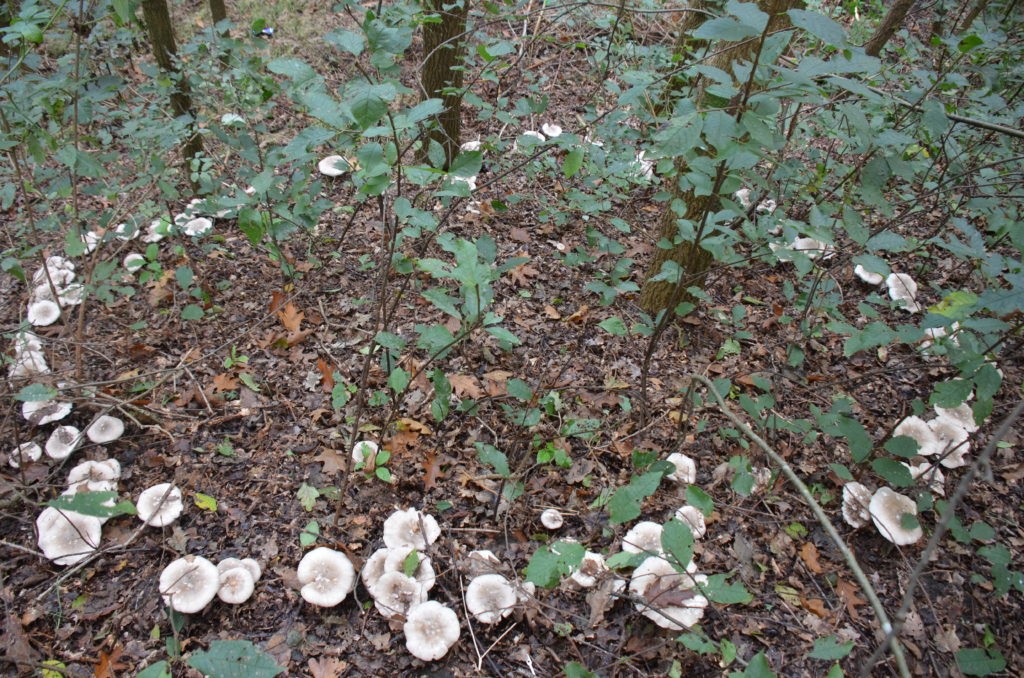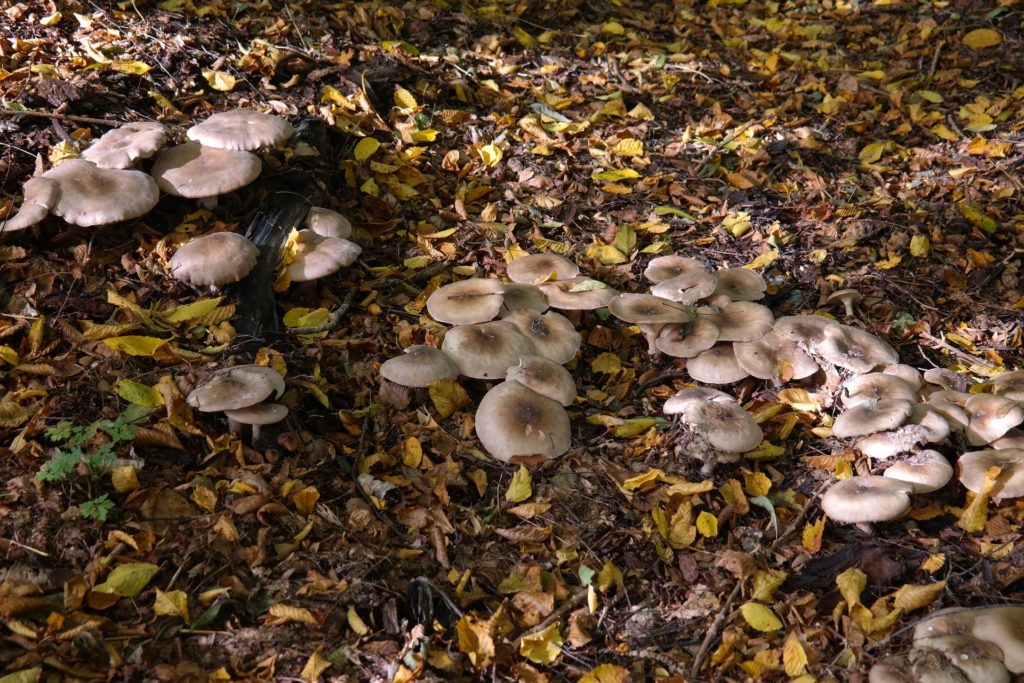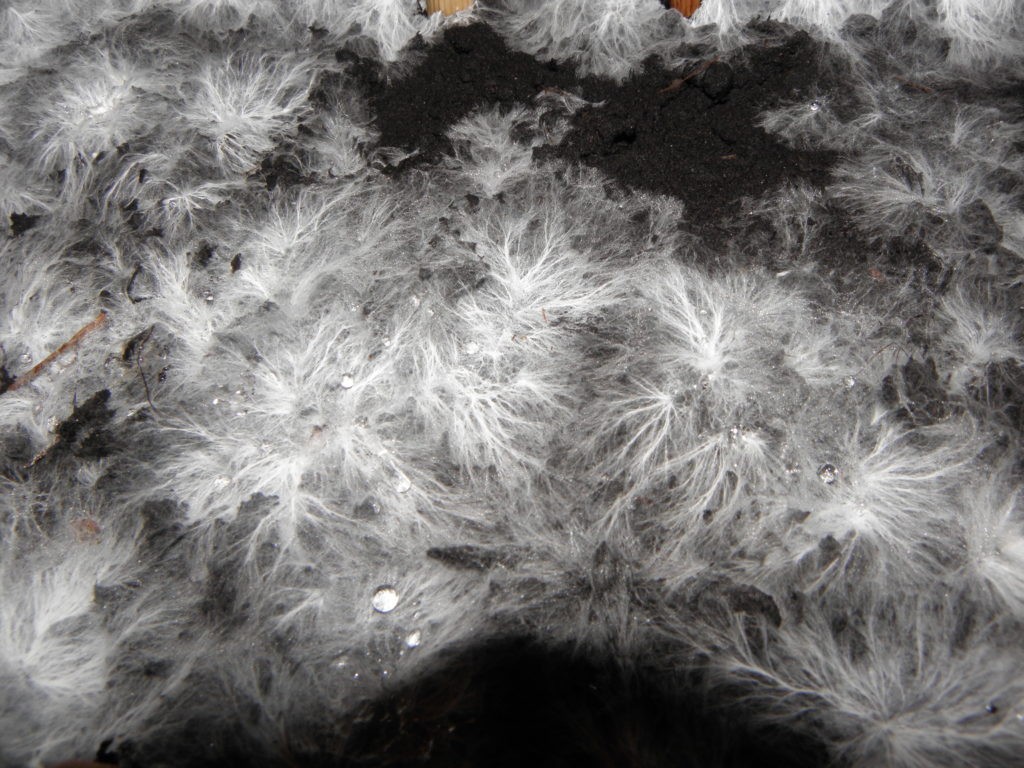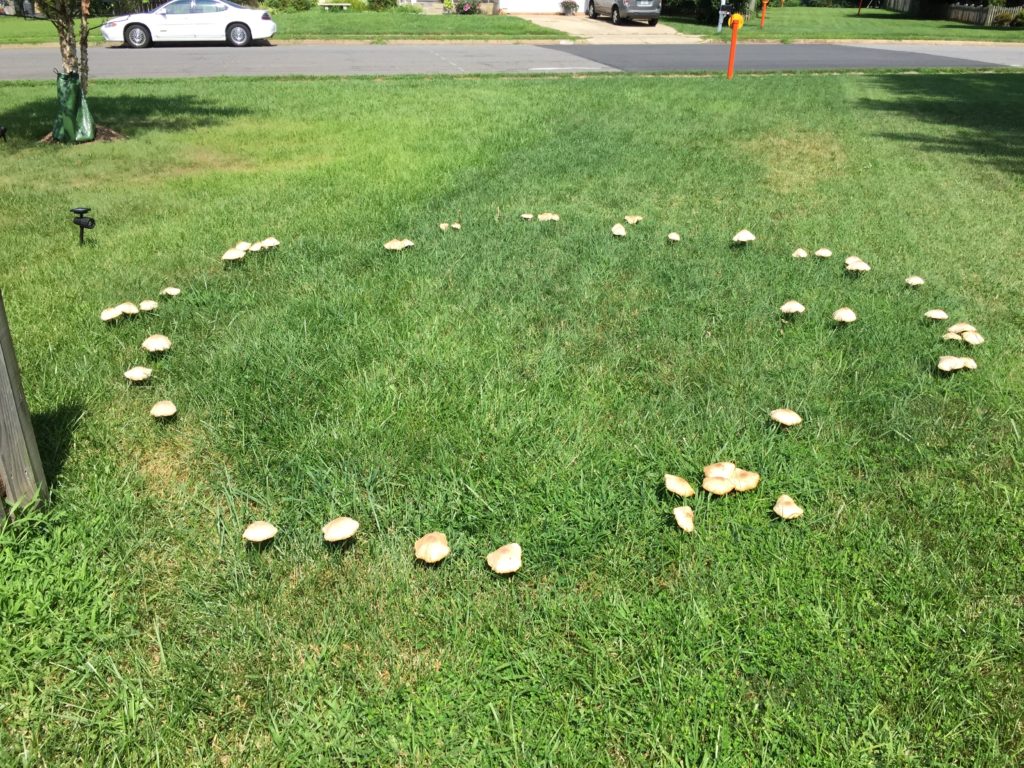Fairy Folk and Fungi
The Science Behind Fairy Rings
November 20, 2020
Emma Schell, Scheduling Coordinator
Every winter, CNC invites the local fairies and gnomes to build their tiny houses, bungalows, cabins, and more along the forest trails. You can see their amazing creations in the Enchanted Woodland Trail exhibit along the wood trails throughout the winter.
When you come to visit these fairy homes, make sure to keep your eye out for another common fairy haunt: the Fairy Ring.

Fairy Rings appear differently depending on their age, but they are most easily identified as a ring of mushrooms.
In much of European folklore, Fairy Rings are said to be portals to the realm of the fairies. If you step inside one, you might get a glimpse of this magical world – but there’s a catch. Many people believed that if you stepped inside a ring, you would be entranced by the fairies’ magic and never return from Fairyland.
Today, biology tells a different but no less interesting story about Fairy Rings.

When we hear the word “fungi,” most of us think of mushrooms, but the truth is that mushrooms are only one small part of a fungus. A mushroom’s job is to help a fungus reproduce, the same way a fruit helps a plant reproduce. They only grow in the perfect conditions – usually when the air is humid and the soil is moist. This is why you see so many mushrooms after a long period of rain, and so few during a hot, dry summer.
Mushrooms produce fungus spores, which are similar to the seeds of a plant, and disperse them into the air. When these spores land on the ground, they grow into a new fungus.
So what makes the mushrooms in a fairy ring grow in a circle?

Underneath the mushrooms and soil is the mycelium, a network of tiny “threads” that absorb nutrients from the soil. The mycelium makes up the majority of the fungus organism, and it is always present in the soil, even if there are no mushrooms.
The mycelium grows out in all directions from a central point, essentially creating a big circle of mycelium under the soil. As it grows, the mycelium excretes an enzyme that breaks down nutrients in the soil. This way, the mycelium can then absorb the nutrients.
After a short time, the nutrients in one area become depleted. New mycelium continues to grow outward, staying connected in a ring formation, while the old mycelium in the middle decomposes.
When the conditions are right, mushrooms sprout up from the remaining mycelium creating the iconic ring of mushrooms that is considered a Fairy Ring.

These structures that we once thought were made by fairies are actually the result of the hidden workings of the natural world. Fairy rings can be found in fields, forests, or even your back yard, but you have to make sure to slow down and look closely at the wonders around you.
The Enchanted Woodland Trails Special Exhibit runs from December 13, 2020 to February 28, 2021. The exhibit officially opens during the Enchanted Woodland Wonders Family Fun Day on December 13.
